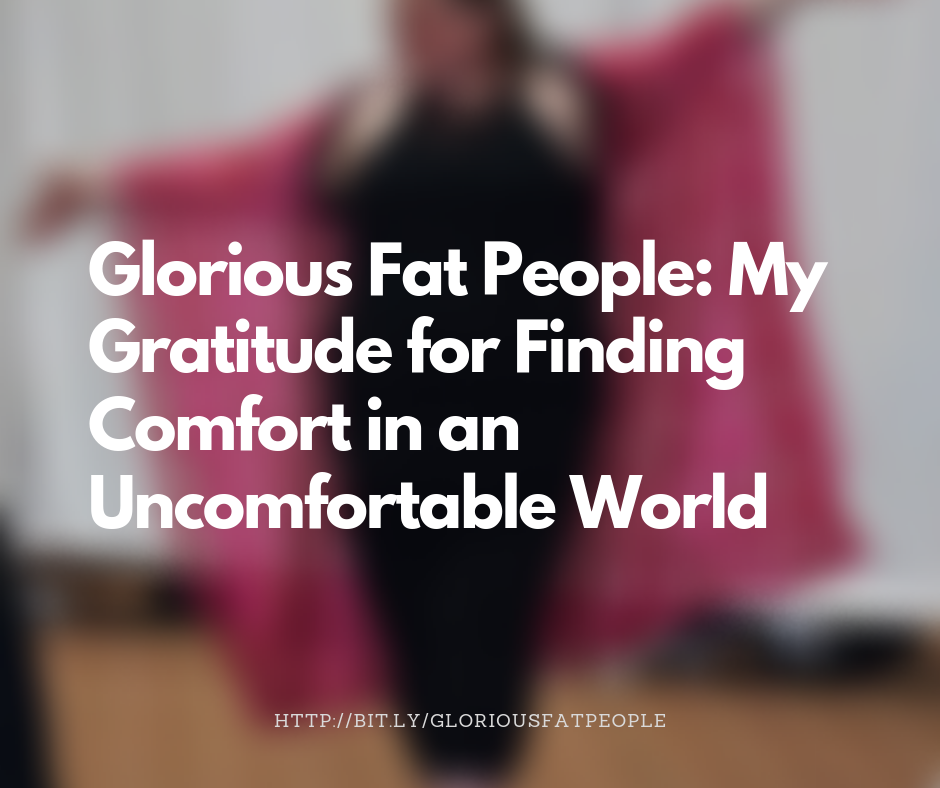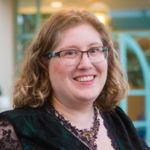
This is a guest post from Dawn Clark, who graciously allowed me to share her experience at the National Association for the Advancement of Fat Acceptance, or NAAFA. – Lindley
I have been fat most of my life, and if there were one word to describe my fat life thus far, it would be “uncomfortable.” I say “uncomfortable” partly because I have always been identified by my fatness first and foremost (at least to much of the world); I also say “uncomfortable,” because the world constantly reminds me that I don’t fit, and I’m not supposed to fit, either.
It seemed to start in the womb. I was 23 inches long and over 9 pounds when I was born. From then on, I was “the fat kid” — singled out for my size and how I did not fit. For the first 12 years, I was always the tallest and biggest in school. I got my period and my breasts way before everyone else.
Overall, I was a pretty active kid, playing soccer, basketball, and volleyball — and all this despite being told that I was “too big to play sports.” Despite my athleticism, fitting into the uniforms was like trying to stuff myself into a sausage casing; finding the right footwear was always a challenge. The shin guards were too tight; the elbow pads never fit.
Though there were some benefits to being taller and more powerful than my peers (I could really kick a soccer ball, and I blocked a lot of goals!), I mostly experienced this as uncomfortable and alienating, isolating me from my smaller peers. Again, the message was loud and clear: ” You don’t fit. You don’t belong [in sports, in school, with other fourth-graders, etc.].”
I was only 10 years old when I first remember a doctor mentioning my weight. He recommended I start exercising, even though I was already engaged in sports. Later, after I had a bad accident playing soccer my 8th grade year, the orthopedic doctor again talked about my weight.
All of these interactions made going to the doctor not only uncomfortable, but something to be dreaded and avoided at all costs. Every medical interaction from the time I was 16 years old never focused on me, just my weight. As a child, I remember being told that I would be dead by the time I was 40. They talked about all the horrible things that would happen if I did not lose weight.
Well, I am 42 now and the biggest I have ever been. And I’m not dead yet. Sadly, though, they were right that my fatness would affect my health — not because my fatness was pathological, but because of how it was treated by my physicians. My clinical depression was missed for years, because I would be told that if I simply lost weight, I would feel better. The cost to my health of my fatness has been stigma and poor medical care.
I can go on and on through my life and it always comes back to being uncomfortable, not fitting in the world — or the world not fitting me. Clothes, chairs, airplanes, transit, work, friendships, relationships, family, and just being fat in public.
However, this story does not end with another fat person simply living an uncomfortable life; I am writing this because this discomfort has started to shift. In 2017, I started getting exposed to fat activism. I had the privilege of attending the International Weight Stigma Conference with my best friend, and later in 2018, we attended the Association for Size Diversity And Health conference.
My eyes were opened to the idea that, perhaps, there was nothing wrong with how I looked. This idea inspired me. I started to engage in more of my own activism. I wrote a blog about my ASDAH experience, that was a first for me.

Then came NAAFA! I had only heard about the organization in passing and did not know much about it. But after hearing about their conference in Las Vegas, I was able to attend, and let me tell you, it was truly life changing. As good as ASDAH was, this was different. It was a room full of people of every shape and size.
But mostly fat people. Glorious fat people. I had never been in a space before where most people were fat. Usually I am the fattest in the crowd. In this space, I was not. I saw fat people and thin people; I saw people comfortable in their skin. I had found my people — old fat people, young fat people!
I found humans I could look to for inspiration and support, people who truly knew what it is like being fat in the world. I heard amazing stories of 50 years of activism for fat acceptance. We talked openly and honestly about intersectionality. We waded into the tensions in the field, talking about the need to be more than just body positive, and actively fight for body liberation. I got to be surrounded by people who truly believe that all bodies are good bodies.
Meeting all these people who have gone before me to fight for a world that I can be comfortable in was a truly amazing experience. I also met people who are new to the fight like myself. To be in a room knowing that there was zero judgment for how I looked made me cry a few times, I will admit.
And, I’ll tell you something else: this uncomfortable fat girl participated in the fashion show. I never before dreamed of doing anything like that. And, you know what? I had fun doing it! I was told that I was beautiful, and I believed them.
I am still digesting my first experience at NAAFA. I think the biggest change for me post-conference has been that I came home and for the first time, talked about all my experiences. I did not tone it down for my friends, family, and coworkers. I didn’t try to accommodate their uncomfortableness in how I look or choose to talk about my body.
I have used the word “fat” at work when discussing the conference; I have been bold and unbothered. I had that usual suspect say, “you shouldn’t use that word to describe yourself” and I actually clapped back with, “but that is what I am — I am FAT.”
I have all of you to thank for that courage. And I have all of you to thank for being in a space that was comfortable, at least for a little while.
To learn more about NAAFA, please check out their website: www.naafaonline.com
To learn more about ASDAH, please check out their website: www.sizediversityandhealth.org.
I want to thank Yabette Swank for choosing me to model one of her beautiful shrugs.
Hi there! I'm Lindley. I create artwork that celebrates the unique beauty of bodies that fall outside conventional "beauty" standards at Body Liberation Photography. I'm also the creator of Body Liberation Stock and the Body Love Shop, a curated central resource for body-friendly artwork and products. Find all my work here at bodyliberationphotos.com.
